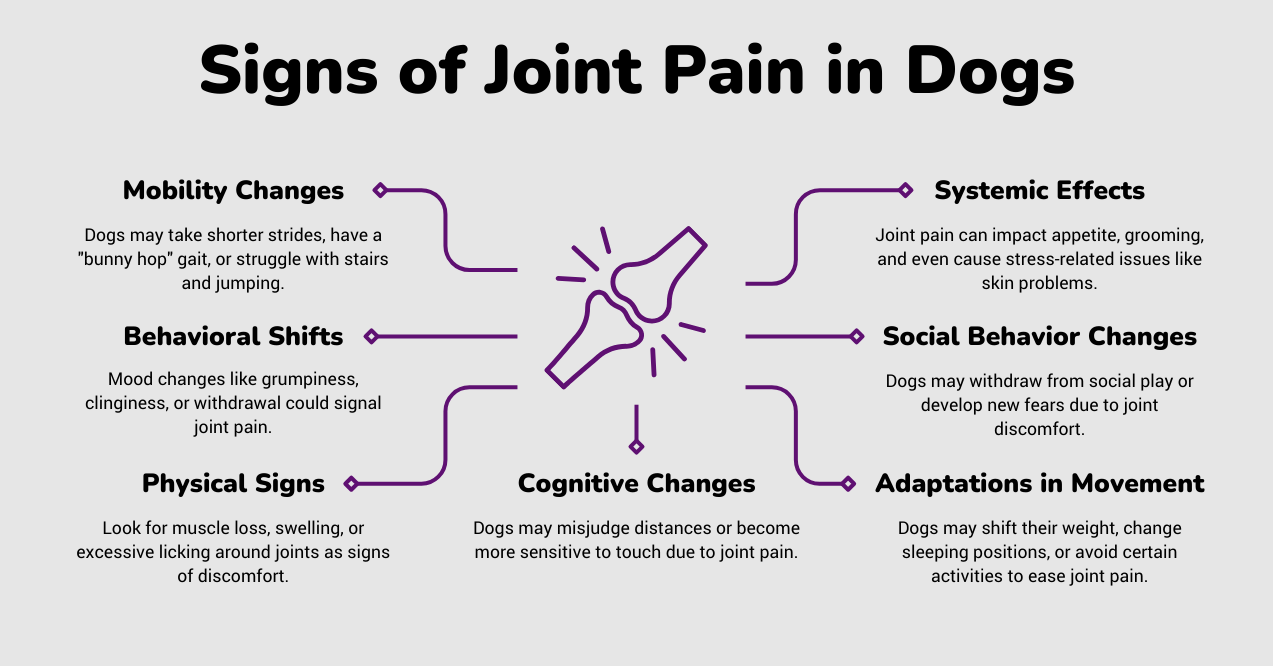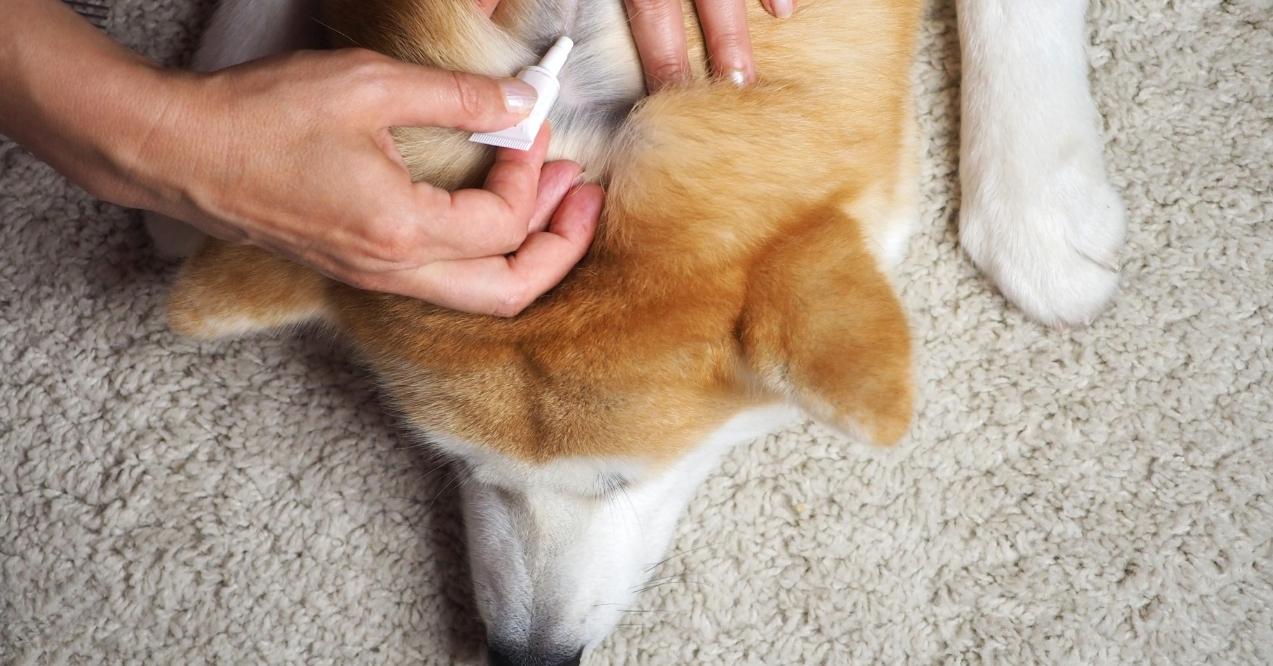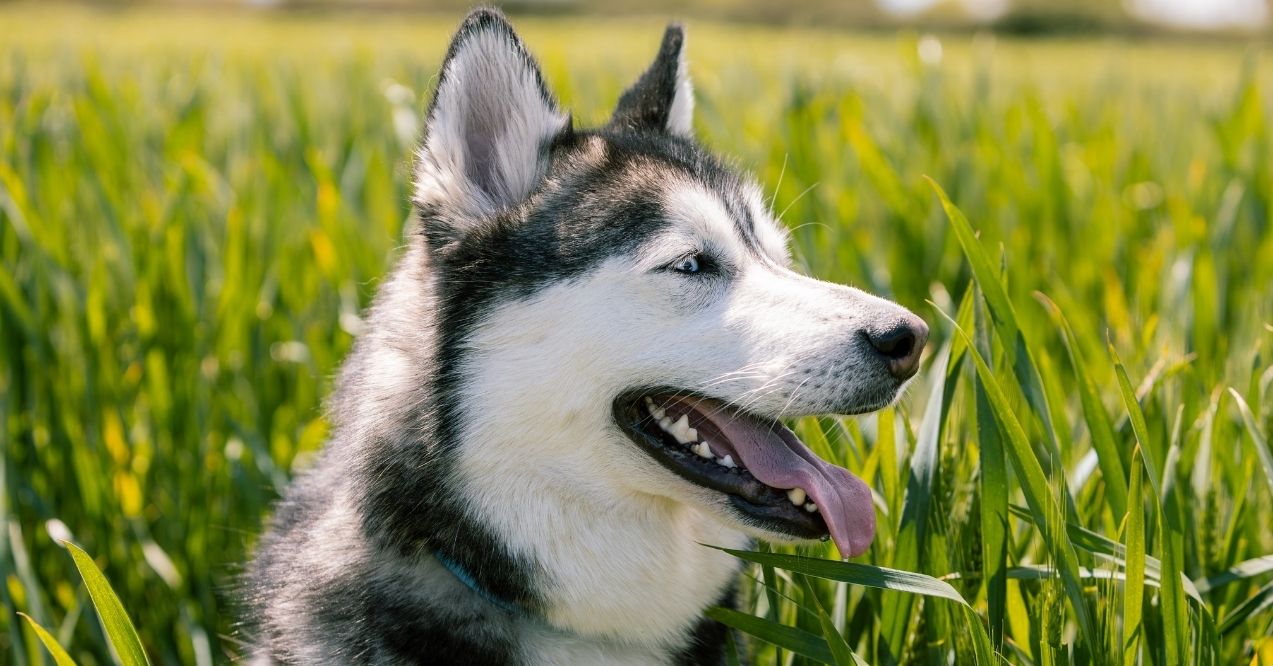7 Signs of Joint Pain in Dogs
Signs of joint pain in dogs can be subtle, but as loving pet parents, it’s crucial we learn to spot them early. Our furry friends can’t tell us when they’re hurting, so it’s up to us to be their advocates. Joint discomfort is more common than you might think, affecting dogs of all ages and breeds.
Let’s explore the telltale indicators that your pup might be experiencing joint discomfort, and learn how we can support their wellbeing.

Changes in Mobility and Activity Patterns
Joint pain can cause systemic effects, impacting your dog’s appetite, grooming habits, and overall wellbeing, including stress-related issues like skin or digestive problems.
If your once-energetic pup now seems hesitant to join in the fun, it could be a sign they’re experiencing discomfort. Joint pain in dogs’ symptoms can be subtle, but you might notice them taking shorter strides or adopting an unusual gait, like moving both back legs together in a “bunny hop.” Tasks that were once easy, like hopping into the car or climbing stairs, may become challenging.
In more severe cases, joint discomfort can escalate to difficulty standing up or getting up after lying down. If your dog struggles to rise, it may indicate worsening joint pain.
During walks, your dog might tire more quickly or show reluctance to cover the same distances as before. Dogs and joint pain often go hand in hand, leading to changes in behavior. They may pause before jumping onto furniture or abruptly stop during play. Morning stiffness or difficulty getting up after long periods of rest can also indicate joint issues.
Pay attention to your dog’s nails – uneven wear might suggest they’re shifting weight off certain limbs to alleviate discomfort, another common sign of joint pain in dogs.
Behavioral and Mood Indicators

A typically cheerful dog becoming grumpy or easily annoyed could be a sign of underlying discomfort. Sore joints in dogs can manifest in various ways, including changes in behavior. You might hear whimpers or groans when they move or settle down to rest. Their sleep habits might change, with a preference for softer surfaces or more secluded spots.
Some dogs become more clingy when they’re not feeling their best, seeking extra comfort and attention. Others might seem withdrawn or less interested in their usual activities. If your pup suddenly dislikes being touched in certain areas or shows uncharacteristic aggression when approached, especially from behind, it could indicate they’re protecting a painful area. These behaviors often occur when dogs’ joints hurt, signaling their discomfort to attentive pet parents.
Physical Changes and Body Language
You might notice muscle loss in certain areas as your dog uses those limbs less. Excessive licking or chewing at specific joints can indicate discomfort. Watch for changes in how your dog stands or sits – they might shift weight off certain limbs or adopt unusual positions to get comfortable. Some pet parents report hearing their dog’s joints cracking during movement, which can be concerning.
Sometimes, joint areas may appear swollen or feel warm to the touch. Your dog’s tail position or movement might change, potentially holding it lower or moving it less. During activity, their breathing might become more labored. Increased time spent lying down can lead to calluses forming on pressure points like elbows or hocks. If you’re worried about your dog’s joints cracking or other signs of discomfort, it’s important to monitor these changes closely.
Cognitive and Sensory Changes

One of the early signs of joint pain in dogs you might notice is your dog bumping into objects more frequently or misjudging jumps. These are potential joint pain in dogs symptoms that can affect their spatial awareness. They may become more sensitive to touch in certain areas, especially if their joints hurt. Familiar environments might suddenly seem confusing, with your pup appearing disoriented.
Their reaction times might slow down, or they may startle more easily at sudden movements or sounds. Some dogs seek out warm or cool surfaces for comfort when dealing with sore joints in dogs. Watch for hesitation or miscalculation when navigating obstacles or attempting to jump. These behaviors often indicate that dogs’ joints hurt, affecting their confidence and mobility.
Systemic Effects of Chronic Pain
Your dog’s eating and drinking habits might change. They may have difficulty maintaining regular bathroom routines. Grooming habits could shift, either neglecting certain areas or over-grooming others.
You might notice changes in how well they regulate their body temperature. Their ability to heal from minor injuries might be affected. Female dogs may experience irregular heat cycles. Stress from ongoing discomfort can manifest in various ways, including skin problems or digestive issues.
Cold weather can sometimes make joint discomfort worse, especially for aging dogs or those prone to stiffness. If you’ve noticed your dog struggling more during colder months, it may be worth exploring how cold weather affects dogs’ joints and ways to keep them comfortable.
Ongoing joint issues can have wide-ranging effects on your dog’s overall wellbeing:
- Changes in appetite or water consumption
- Impacts on digestion and elimination habits
- Alterations in grooming behaviors (over-grooming or neglect)
- Changes in body temperature regulation
- Impacts on immune function and healing processes
- Disruptions to normal hormone cycles (e.g., irregular heat cycles in females)
- Development of stress-related conditions (e.g., skin issues, gastrointestinal upset)
Social and Interactive Behaviors

In multi-dog households, you might notice shifts in the established pecking order. Your dog may respond differently to familiar commands, especially those requiring physical actions. New fears might develop, particularly related to surfaces or situations that could potentially cause discomfort.
Joint discomfort pain can affect how your dog interacts with others:
- Alterations in play style with other dogs
- Changes in human-animal bond dynamics
- Withdrawal from social interactions or family activities
- Decreased interest in environmental enrichment activities
- Changes in hierarchical behaviors within multi-dog households
- Altered responses to familiar commands or training cues
- Development of new anxieties or phobias (e.g., fear of slippery surfaces)
Your dog’s play style might become less energetic or more cautious. They may seek different types of interaction with you, perhaps preferring gentle petting to active play. Social withdrawal is common, with less enthusiasm for family activities or interactions with other dogs.
Compensatory Behaviors and Adaptations
You might notice your dog standing or walking differently, shifting weight away from certain limbs. They may develop new routines that allow them to avoid activities that cause discomfort. Watch for increased reliance on visual cues rather than physical sensation to navigate their environment.
Sleeping positions might change as they try to find more comfortable ways to rest. They may show strong preferences for certain types of surfaces to walk or rest on. Even their posture during bathroom breaks might alter to accommodate joint discomfort. Problem-solving strategies for physical challenges, like getting onto furniture, might change as they adapt to their new limitations.
Conclusion
Signs of joint pain in dogs can be subtle, but recognizing them early is crucial to keeping your dog healthy and comfortable. Changes in mobility, behavior, and physical appearance may indicate joint discomfort, so it’s important to monitor your dog and consult a veterinarian if needed. Early detection and proper care, such as a balanced diet and regular exercise, can help manage joint pain and improve your dog’s quality of life. Staying attentive and proactive ensures your dog stays active and happy longer.
Dog owners often overlook subtle changes in activity levels, slight alterations in gait, or minor shifts in behavior. Decreased enthusiasm for play, reluctance to jump or climb stairs, and stiffness after resting are frequently missed early indicators of joint discomfort in dogs.
Joint pain can make dogs less active, more irritable, or hesitant to engage in previously enjoyed activities. They may become clingy or withdrawn, show changes in sleep patterns, or display uncharacteristic aggression when touched in sensitive areas. Altered social interactions with humans and other pets are common.
Yes, joint pain can affect a dog’s cognitive function. It may lead to decreased spatial awareness, confusion in familiar environments, and difficulty judging distances. Dogs might also show heightened sensitivity to stimuli, altered reaction times, and increased anxiety or stress-related behaviors due to ongoing discomfort.
Dogs often develop compensatory behaviors to alleviate joint discomfort. They may shift weight to unaffected limbs, adapt sleeping positions, or seek specific surfaces for comfort. Some dogs create new routines to avoid pain-inducing activities or alter their problem-solving approaches to navigate physical challenges.
Advertisement. This site offers health, wellness, fitness and nutritional information and is designed for educational purposes only. You should not rely on this information as a substitute for, nor does it replace, professional medical advice, diagnosis, or treatment. If you have any concerns or questions about your health, you should always consult with a physician or other health-care professional. Do not disregard, avoid or delay obtaining medical or health related advice from your health-care professional because of something you may have read on this site. The use of any information provided on this site is solely at your own risk.



















